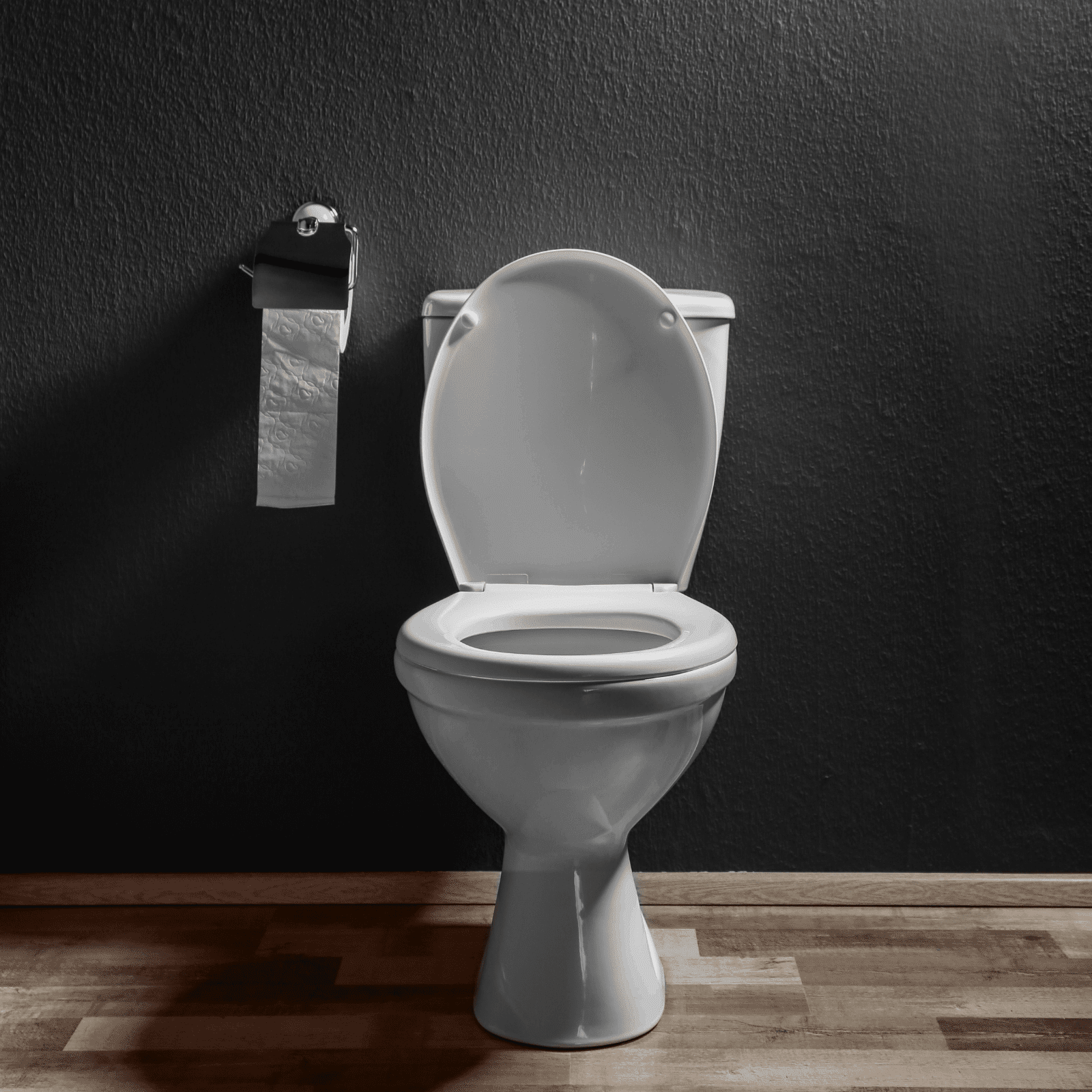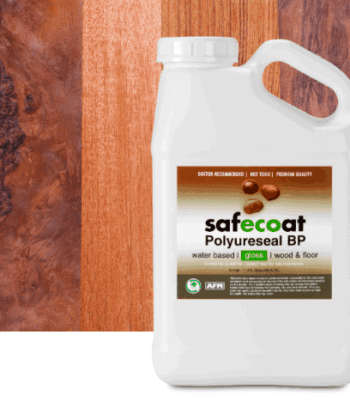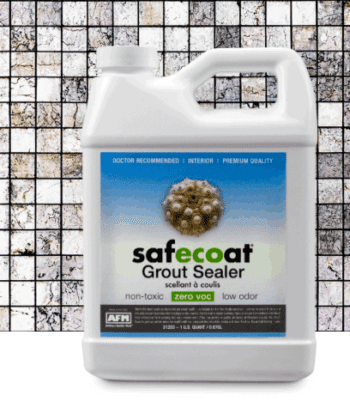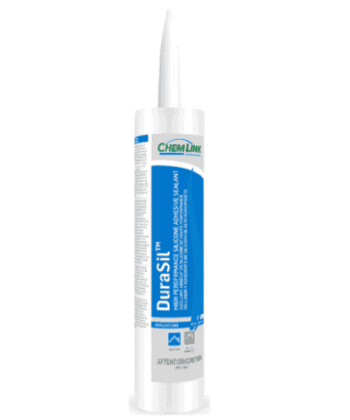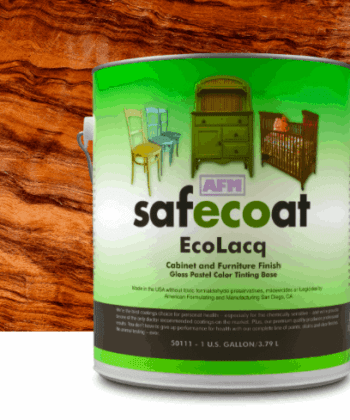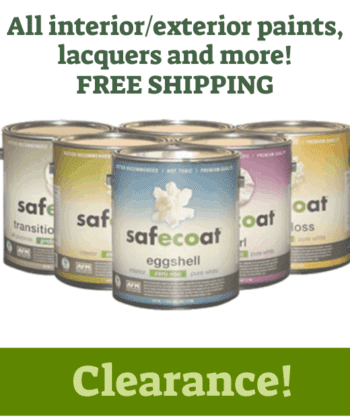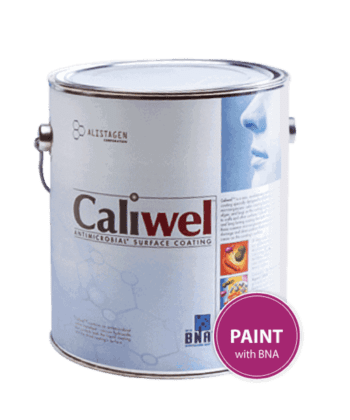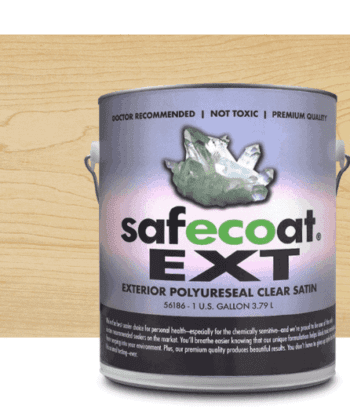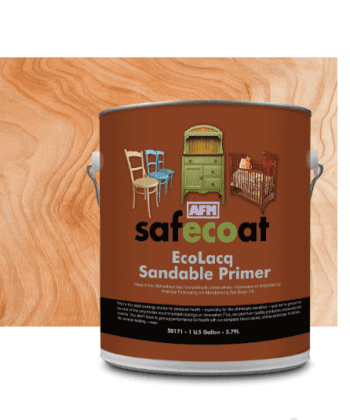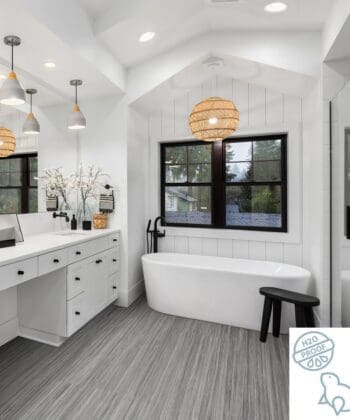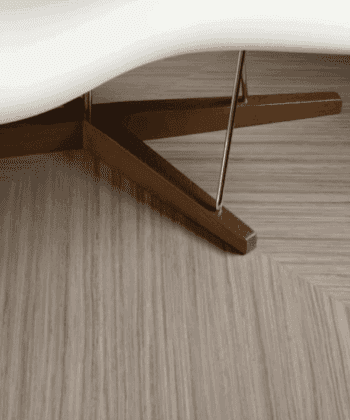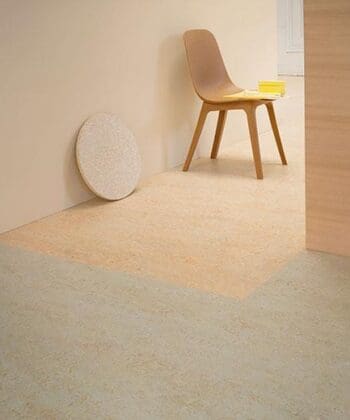Podcast
NTE Podcast: Bathroom Projects
NTE Podcast: Bathroom Projects
It’s that time of year. We’re getting antsy. We want to take on a project in our house but it can’t be too big, since spring is around the corner and we’ll all have yard work to do. So maybe that’s why bathroom remodeling projects are always so popular this time of year. In this episode, Jay and Andy discuss some of the more common materials used and the ways to avoid mold and other toxicity issues.
iTunes
Google Play
Spotify
Transcript
Bathroom Projects
Andy: Lots of bathroom remodeling questions this time of the year. Winter time is a good time to get these little projects done before we have to move outside. So today, on Non Toxic Environments, Jay and I will be talking about bathroom remodeling. The do’s and don’ts, the materials available, and how to avoid the typical mold and other toxicity issues; today on Non Toxic Environments.
Hey, we’re back on Non Toxic Environments. Jay, we are into the cold months of the year here in Wisconsin.
Jay: Still? still Andy boy. Oh boy. Yeah, the cold months in Wisconsin, I think, don’t you define cold months? Isn’t that Wisconsin?
Andy: Yeah. Yeah. Well actually we have, we have two seasons here in Wisconsin.
Jay: Cold and colder?
Andy: Winter and construction…
Jay: A nice lead into our subject today, which is actually a construction thing, something that’s important to a lot of people. Why? Because we use this room every day,
Andy: every single day.
Jay: And more than once!
Andy: And sometimes we have time to sit there and contemplate what we’re surrounded with.
Jay: We can actually immerse ourselves in this subject, can’t we Andy?
Andy: We can. Immersion is a part of this room. You’ll be showered with good ideas, folks.
Jay: Are you getting the message here?
Andy: We’re talking about bathrooms today, talking about bathrooms. Okay. So Jay, in the last few weeks I’ve had at least a half a dozen clients contact me about remodeling a bathroom or they’re in the process of designing their new home and the topic of the master bathroom comes up. So I thought, we should really discuss this, and in talking during the coldest time of the year. And it’s interesting if I think back in 27 years, just about every February is when we start to get phone calls from customers. They’re thinking about doing a bathroom remodeling. And I think it’s because it’s one of those things that people want to get done in the winter months before spring and summer comes along. And they also think it’s a project that can be done somewhat, I don’t wanna say simply, but less time than it takes to let’s say remodel a kitchen.
Jay: Yes.
Andy: And it always comes into the conversation of the materials you’re going to use and the finishes and so forth. And we usually have to break it down to the most important thing about a bathroom. And especially in, in the upper Midwest and other parts of the country where there’s such a variance in temperature difference from the inside of the outside. One of the biggest things we’re concerned about is a moisture control.
Jay: Yes. It’s the highest moisture room in any home for the most part. You know, the other thing about bathrooms, it’s much like kitchens, the valuation of your home… those rooms are, are high value rooms. So we have to kind of think of it, you want a really good looking kitchen, you want a really good looking bathroom, right. Those are selling points for people.
Andy: They’re definitely a selling point. Between kitchens and bathrooms, this is where you’re going to get almost every dollar of your investible come back in the form of an improved sale price.
Jay: That that’s exactly right. So I like that idea because in other rooms where we may have to for budgetary reasons kind of scale back a little bit in the bathroom and the kitchen, those are those places where he can kind of let it go. Right, right. Cause you know, as you just mentioned, you’re going to recoup that money back on in the future.
Andy: Exactly. And I think bathrooms specifically because the amount of material used in a bathroom is so much smaller than a typical kitchen. It allows for a little bit of splurging sometimes and not only with your material itself, but with your colors and the look, the aesthetic of the materials.
Jay: So let’s break it down to the basics. All right, let’s go right to the basics. So what are the basics? We’ve got a toilet. We’ve got a sink and we’ve got a bath or a shower. So why don’t we start there and just share your ideas about that.
Andy: Sure. So, the best thing I can say about things like toilets or water closets and sinks and so forth, is that you really don’t want to find yourself in a situation where you have to replace it three or four years down the road because now you’re hiring a plumber. I liked the idea of spending a little bit more on something like a toilet or a faucets because it eliminates potential of water leakage, which can lead to a mold problem. And so folks, one of the things you’re going to hear throughout this entire episode is mold is the chief thought on our minds when we’re talking about bathroom, either building a remodeling because of the fact that it’s so inherently moist and there’s a lot of food source for mold in a bathroom, right?
Jay: There’s a lot of water around, a lot of water.
Andy: And, and think of this, you take a shower, take a bath, and that steam rises from the water. Well, it’s not just water folks that is dead skin cells and soap scum and essentially these are the things that mold loves. Wherever that steam travels, it carries with it that that other mess of materials and it’ll stick to the walls. It’ll stick to the floor, it’ll stick anywhere. It can wherever, steam lands. so will those other things. And if there are mold spores in the air, and I say, I shouldn’t even say if! There are mold spores everywhere, and under the right circumstances that can lead to mold growth. And that’s why in bathrooms it’s so ubiqitious. You always see little bits of mold growth on walls and bathrooms and it’s usually because people don’t ventilate properly or they don’t wash surfaces properly.
Jay: Yeah. I was just gonna say ventilation is a huge thing. Sometimes people have bathrooms, there’s no ventilation or using a forced air ventilation on a mechanical ventilation versus a natural ventilation.
Andy: Yeah. And so that actually came up in conversation with a client today. I know we’re kind of jumping around here, but the key theme here is moisture protection and mold protection. They have a small powder room that they constantly have mold problems with. Actually, I would call it a half bath that has a walk in shower. They don’t understand why they cannot get rid of the mold growth and yet they have no powered fan in the room. And older homes are like this, right? So you’re kind of stuck in a situation where you either build it out then to protect against the mold growth that will occur. So you’re using porcelain tile on all the surfaces, right.
Jay: Harder surfaces. Right. Right.
Andy: You need to devise a way that you can cut in a fan and ventilate it to the outside.
Jay: Right. It’s making me think, and you’re right, folks, we’re kind of jumping around a little bit, but I think we’ll all pull it together here. It makes me think about the remedy that you have Andy, the Caliwel product, that can be used to kind of as a little bit of insurance policy for this kind of mold protection. I wanted to get back to the fixture idea because I know that whats become popular is dual flush toilets. Right? And so I guess my question and probably a question in the minds of most of our listeners is costs, how much things cost. When I go down and get a regular toilet, single flush toilet. And, but I like the idea of dual flush. How much money more am I going to spend for a dual flush than for a regular?
Andy: Well, in some instances, Jay, you won’t even spend any more for a dual flush. Here’s the thing, you can buy a toilet for $200. You can buy a for $10,000. Okay. I don’t advocate the $10,000 toilets yet because at the end of the day, it’s not necessarily worth it. It’s not a life changing event. But I will say that a toilet that’s going to cost you in the 4 to $500 range, a decent Toto toilet, that has either a dual flush or just a low flush. They’ve designed their internal flushing mechanism in a way that… One of the downsides of the early low flow toilets or dual flush toilets is that you’d have to flush two and three times. And so it’s kind of the unintended consequences of trying to do the right thing.
Toto really did a good job with their flushing mechanism. I absolutely love their product and we use them on almost every project that we’re involved with. Getting back to the original idea about your fixtures and mold protection and so forth, the glazes that Toto uses for their toilets is just superior to what’s out there. They even have in some of their higher end versions, a glaze that has what’s called active technology. And active technology essentially is a high degree of titanium dioxide that’s used in the glaze. Titanium dioxide is naturally antibacterial.
Jay: Yeah. You need to riff on this a little bit though. Cause you know, titanium dioxide gets a black eye out in the world as well.
Andy: Well, from a paint standpoint or a grout standpoint, titanium dioxide is considered a potential carcinogen because the dust could be inhaled and it could lodge in your lungs and create silicosis and so forth.
Jay: Yeah, I think that’s an important point to make folks. It’s gotta be what’s called friable, meaning it’s turned into dust and then you have to inhale it. It’s not, it’s not a gas.
Andy: Exactly. And so titanium dioxide that’s found in a solid form like a glaze on porcelain doesn’t have that ability.
Jay: No, it’s benign
Andy: But it has the ability to kill off bacteria and viruses and mold spores. And so, Toto actually invented this technology years ago and they’ve sold the technology, the rights of the technology to companies like Transceramica tile who does a large format porcelain for not only for interior of buildings, but for like tunnels, highway tunnels throughout Europe, for railway tunnels. And this act of technology allows for contractors that come in once in a while with high powered water cannon, and essentially just wash off all of the pollution that collects on the surface because it can’t stick to this active surface. It’s really amazing stuff. So Toto took this technology and then they coupled it with a toilet seat that when it comes down, it automatically turns on a high powered UV lights and it literally kills off any microorganism within the toilets.
Jay: And then this is the 400-$500 toilet you’re talking about.
Andy: This is probably a $7,000 toilet. But the porcelain is still the same. And in Toto is a company really leading the way with this. And you will see year after year this type of technology becoming more affordable. And, matter of fact, you can even buy toilet seats now, I believe Toto makes them that you can retrofit your existing toilet with this special UV light. So the technology is out there folks. In some situations a technology can be a good thing.
Jay: Yeah. And aesthetically too, you can get really good looking toilets. It doesn’t have to be the old fashioned bowl situation. They make really nice looking, very sleek, very modern looking toilets. And that’s always nice to have that have that ability to make some design decisions that are really high end. Going back to the idea that it’s all gonna come back and money. So of course, obviously, we’ve got the whole sub floor situation around the toilet, and the things we need to do to make sure that we’ve got good connections between the toilet, right? We talk about sealing the plywood or the sub floor material to kind of get add water repellency to it.
Andy: Well let’s kind of take a look at it this way, Jay. When we’re looking at doing a bathroom remodeling, one of the things we talk about or we’ll bring up right away is ultimately what are you trying to achieve? You’re trying to achieve a space that is impervious to water because water intrusion is a great possibility here. Something that’s easy to keep clean, easy to maintain, something that holds its value as you’re talking about. So in bathrooms, I actually kind of like to work from the visible side then back all the way down through to the sub floor. Okay, so let’s talk about things like your walls in your floors. I’m a big believer in the use of porcelain tile in a bathroom. Now there’s porcelain tile in there, ceramic tile, these are your manmade tiles. Then there’s natural stone. I don’t like the use of natural stone because natural stone does have to be sealed in order to keep it from staining, from absorbing oils in bathrooms because of soaps and shampoos and skin oils and so forth. This can be problematic. So I like porcelain the best.
Now all porcelain tile is ceramic. Not all ceramic is porcelain. And I say it that way to describe that there is a difference. There is an improvement that porcelain adds. It’s a denser material. It’s a stronger material and most importantly, it’s far less apt to absorb moisture than just traditional ceramic. There are no chemical admixtures used in the production of porcelain tile. It’s inorganic minerals that are mixed together and fired at a very, very high temperature, typically 2,500-2,600 degrees, and then they’re glazed and that glaze, essentially is a layer of glass that is molten onto the surface.
Andy: Now the way porcelain tile is made these days in many situations you find it impossible to tell the difference between, let’s say a what’s called a through body porcelain tile that looks like Calcutta marble and a real piece of Calcutta marble. So I don’t believe you have to alter your design intentions whatsoever. If you want to choose a porcelain tile in lieu of a natural stone.
Jay: Yeah, I like the idea. You don’t have to seal it. I mean, bingo. Yeah, take kicking some of the steps out of the out of the equation to me makes a lot of sense. And certainly from a maintenance standpoint, going forward, if you don’t have to reseal your tile every so many years or whatever, it’s just makes so much sense to go that direction.
Andy: Exactly. And so that’s why I like using that for floors, for walls. I certainly know a lot of clients that have used a wall tiles. I would say most often people are just going with a painted surface, or a combination of tile and paint. We like to use a paint that has a little bit of a sheen to it, right? Because it allows for moisture to be wiped off the surface a little bit easier. Now hopefully if your bathroom is ventilated properly, you’re not going to have moisture building up on the surfaces.
Jay: Right. My situation is exactly what you described. I have subway tile coming up about halfway up my wall and then it graduates to painted surfaces with the cabinets. And then the ceilings are actually painted as well. And in my small bathroom it’s wooden, so my walls are wooden, my ceiling is wooden. I have a terracotta tile on the floor. And then subway tile in my, I have a walk in shower, steam shower. I can step into it. I have a bench and I can sit down, I can, turn on the steam. And it’s glass enclosed. So, I open it up. Obviously there’s a lot of steam coming out, but I actually have a sliding glass door off of my bathroom that goes out into a little private area where we have our laundry facility. So the really nice thing about this little aside folks, but the nice thing about this is in the morning before I shower, I throw my towels into the dryer and I warm those babies up. And when I step out of the shower, I reach out there and grab a hot towel.
Andy: The things you can do when you live in California.
Jay: Oh boy. Oh boy. Oh boy. And so anyway, but the point I’m pointing, but I make there is that I can paint walls… and you’re right. Enamels are better, eggshells, semi glosses, they help to resist the attraction of water to the surface. But I have that door that allows for excellent ventilation. I’m never worried about it. Do you know any of the mold or mildew things that might challenge other people?
Andy: Exactly. Alright, you got your wall finishes, your floor finishes, so the comment comes up, well what if I don’t want hard floor finishes? What if I don’t want porcelain tile?
Jay: Yeah. I don’t want to slip. I’ll slip off.
Andy: All right. So a couple of things that are, that we use. I actually have natural linoleum and my bathroom. Okay. Now this is for some reason there was about 10 years ago, this internet scare on some blog posts saying that you can’t use natural linoleum in the bathroom. Well, completely folks, completely false.
Jay: What were they saying was the reason you couldn’t use it?
Andy: They said with water sitting on it, it would swell. And that is not the case actually with solvent sitting in on it, they can swell. But with water never had a problem. Matter of fact, something like Forbo’s Marmoleum, we’ve used in surgical rooms that get mopped, every day.
Jay: Absolutely no problem. Yeah. Did you go sheet or tile?
Andy: We have one bathroom, one sheet and one bathroom that’s a glue down tile. The adhesives are so advanced these days that you do not have to worry about moisture getting in between the seams and getting down to the sub floor. And so this is where it gets a little tricky. I talk about porcelain tile being the best thing for a bathroom, but I also have to tell you that you need to make sure your sub floor then is adequate for what you’re doing. And so when we look at other you use for flooring, whether it’s more Marmoleum or even cork for a floor in a bathroom or even a wood look material, which we’ll talk about in a bit, it always comes down to making sure you have a sub floor that has adequate for what you’re trying to achieve.
Andy: So we always like to find out what’s the goal here? What’s the aesthetic? I love Mar Marmoleum because it’s different. It kind of looks like stone, but it isn’t. Natural linoleum is naturally antibacterial and anti-static.
Jay: Correct.
Andy: Because of the linseed oil. I don’t know of a better material to use in a bathroom than natural linoleum. That’s my personal opinion. Because of the fact that it’s so easy to keep clean, because it is impervious to water. The the idea of doing tile to me, unless you have like in floor heat seems to be too cold of a floor for my personal taste. However, if that’s the style you’re trying to achieve, go for it. There’s healthy ways to do it.
Jay: Right. There’s patterns and color choices in the national linoleum that are very good. Hundreds of colors and patterns that you’re not limited.
Andy: You’re not limited, not at all. Do you have different things to take in consideration as far as how you prepare the sub floor? That all can be dealt with. That’s not a big deal.
Jay: Give me a relative cost just off the top of your head between maybe porcelain and Marmoleum, ballpark.
Andy: You know, I would say by the time it’s all said and done, Jay, you’re looking at about the same between the two. Now you can certainly buy porcelain tile for $15 a square foot. You can also buy it for $1.99 a square foot. Marmoleum, something like that comes in at about 4 or $5 a square foot. And with both of them you have to prepare the floor and you’re paying for the labor to install it. I think if you use a good budget of eight to $10 a square foot for your flooring, you should be covered for just about any of these, a little bit more if you’re looking for something that’s extremely unique when it comes to porcelain. But what about if you don’t want to do a stone look? What if you want to do something that looks like wood?
Jay: Yeah. Which is becoming more popular now. Wooden floors are showing up in the most unusual places. I want to hear what you have to say about this because I am interested in that.
Andy: So we have two things that we just talked about. Porcelain and Marmoleum. Porcelain comes in a wood look tile and Marmoleum has a style they call their Striato series that kind of looks like woodgrain but you know both of them, they aren’t wood.
So we’ve been working with a product called Amorim Wise and Amorim Wise is a type of floating floor. And folks, if you’ve known me long enough, you’ve listened to enough of my rants over the years, you know that I’m never a big fan of using floating floors in a bathroom. And that’s because of two inherent problems. Number one, moisture. If you have any moisture or water that gets on the surface of the floor, it could run down to the low spot somewhere and then peel underneath and effect your sub floor, right? And then you have a problem with your sub floor. The other problem with a floating floor is the toilet becomes a pinch point. Floating floors have to float in order to properly work and you have to clamp your toilet down in order to clamp it to the flange. And so that becomes a pinch point.
Well is Amorim Wise product that we started working with a few months back has become a real lifesaver in the situation because it has such dimensional stability to it that we’ve been able to use it in bathrooms. We’ve used it at a couple of smaller powder rooms where clamping the toilet down didn’t affect it whatsoever because there’s not enough material really to it and it doesn’t move. It doesn’t swell or shrink. It’s actually a high compression cork, solid cork material, that has either a layer of a cork veneer on the surface or a layer of recycled PET that is printed to look like woodgrain.
And that one it’s called the Wood Wise has become a real hot ticket and it looks beautiful. It feels wonderful. It’s a decent price. We’re talking about the same prices, regular linoleum or less.
Jay: I just jumped on the website and I’m looking at it, it is beautiful.
Andy: It is beautiful. And, and so folks, if you want something that is not only unique in look, but also has this, the attributes of natural cork, cork is warmer to the touch than wood or tile. Cork is sound-deadening cork is shock absorbent, so kind of like a kitchen, in a bathroom you spend some time there in the morning getting ready to go to work or wherever you’re going. And standing on porcelain for a longer period of time can become a little bit difficult on the joints. Well standing on cork is, is beautiful, it’s wonderful.
Andy: And so this particular product is a fast becoming one of our go-to recommendations.
Jay: Nice. Really nice.
Andy: And then of course you can use regular wood in a small powder room. I wouldn’t advise it in a bathroom that has a shower or a bathtub because traditional wood is just so affected by moisture. You’d get cupping and swelling and shrinking. It can become a mess.
Jay: So let’s climb into the shower and bathtub. Let’s talk about those a little bit.
Andy: So climbing into the shower right now, the trend is going with tile walls and either a tile floor, a stone floor. Right now I have no problem with these materials. I think they look beautiful. But you have to understand some of the inherent issues with the application or installation with this. The question always comes up, Jay, what do we do about a healthier version of grout or a healthier version of thin set mortar?
Well, there really isn’t anything. The dangers of those two things, if they’re just a dry bag mix is you have your minerals, your titanium dioxide, your crystalline silica. These are things that are always found in cementitious materials. And you can’t do anything about that.
Jay: And the problem there is you don’t want to breathe dust if it was flying around.
Andy: But once it’s mixed up, the tiles are up and everything’s set, you can always seal the grout with something like the AFM Grout Sealer. And then you’re good to go. Now an advancement to this is there’s a couple of manufacturers of porcelain tile now that make what’s called large format porcelain. Large format porcelain comes in pieces up to five foot by 10 foot. So you actually have it fabricated in panels.
Andy: You only have seams in the 90 degree corners, no grout. Yup. Those seams will receive a small bead of a silicone caulk, something like a Chemlink Durasil. And that’s it. So as we mentioned before, porcelain never needs to be sealed. It’s impervious, doesn’t stain, really maintenance free. And then for your floor you can choose to do either a tile floor or you can do a pre molded, like an acrylic or a fiberglass shower pan, right?
Jay: People worry, I think about back to the idea of using grouts and using mortars. I think people get a little too worried about it. You know, the way I think of it is, you’re putting a nice barrier on top of those materials, your tile. So, when people ask me about that, well I’m worried about thinset mortar and I’m worried about the grout. Let me explain my position here. You’ve got really wonderful protective material on top, a solid protective material that’s not going to allow… I think they think there’s the thin set mortar is gonna like off gas. Right? And so they want to protection. And I say, well your tile is as good as it gets. These is the thing people will say, well I gotta seal something, but it’s down underneath other stuff and I’m worried I’m going to have to, it’s gonna be a problem. And I said, well, a couple of things. One, it’s probably not the biggest, the problem you think it is. And secondly, even if we tried to control it, we’d have to be able to put something on it directly.
Andy: Right.
Jay: Which we can’t really do. And we don’t need to do in this instance because we’ve got the protection with the material itself.
Andy: Well you have to, you have to choose and pick and choose your battles. We say this all the time. A lot of times people when they’re looking at doing projects like this, they’re thinking of every aspect. And I applaud people for really digging into the project and making sure that all the T’s are crossed and I’s are dotted. But at the end of the day, folks, unless you’re the one actually doing the work yourself, I wouldn’t be as concerned about what’s behind the tile. As you say, Jay, nothing’s getting through that tile. It’s possible that something could migrate through the grout, but not probable. Right. The biggest issue with those two situations with your thin set and your grout is during the installation of it or application of it, could some of that material become airborne and then travel throughout the rest of the house?
Andy: Yes. Could it? Yes. If you protect your doorways, put up zip walls to protect the doorways, cover up the return air ducts and so forth. Just make sure that none of that dust travels throughout the rest of the house. At the end of the project this will not affect anyone. But for peace of mind, which we talk about quite often, sometimes you have to check these things off the list just to make sure for peace of mind. So we do have options for those who work with us on a consulting basis, we have lists of materials that we know have been proven to be safer for our most chemically sensitive clients.
Jay: Yeah. That, that’s kind of where we start in the discussions. Most of the time. That’s our focus. That’s our main focus. That’s where we jump into the conversation at that point. The other thing too that we keep talking about here is the fact that one of the goals here is to have it be maintenance-free. And so all these materials we’re talking about push us in that direction.
Andy: Yes.
Jay: When we know that we don’t have to worry about surfaces that may be receptive to mold and mildew because we’ve used materials that are resistant to that, that is the prime objective here. You don’t want to have to worry about this stuff. Bathrooms are the place you want to refresh yourself. I call it a refreshment room. I’m in there bathing, personal care. My wife actually oils in our bathroom. She sets a blanket down on the floor and she does her oiling in there. It turned the heat up in there and get it nice and warm and she’s in there oiling. And so it’s a place where you want to take care of yourself and you want to feel nurtured in your bathroom. The last thing you want to worry about is, I have a mold problem in here somewhere. No, no, no.
Andy: Right. Well, exactly right, Jay. All the materials we’ve talked about so far are easy maintenance and you don’t have to necessarily worry about that ever being problematic. Now what about situations where people say either I don’t like the look of tile back splash or surround in a shower or a bath bathtub or, it’s just out of our price range. What do we do? So the next best thing actually in, actually I don’t even say next best thing, it’s just a different thing to do quite honestly folks. Cause there’s some really attractive pre-manufactured shower and tub surrounds out there. There are two types of tub and shower surrounds that are manmade. A one is made from cast acrylic and the other one is made from fiberglass.
Andy: We typically gravitate towards the fiberglass surrounds. Fiberglass surrounds are usually finished with these gel coats that are baked into the surface. And those gel coats, when you get it hot with piping hot water, they don’t release release much of a smell. Acrylics on the other hand, when they start to get warm, you can start to smell them more and more and more. And we’ve also found that acrylic surrounds, unless they are impregnated with Microban and other toxic antimicrobials; acrylic surrounds can actually get mold stained and that those mold stains are in the surface. The only way to get it out of there is to do some really nasty things with chemicals that we don’t want to have to do. Let’s look for the fiberglass surrounds.
Jay: Really important. And there is some worry people and I think you maybe just explain them not why not to worry. I think some people hear the word fiberglass, they may get a little bit freaked out by that. But I think you’ve just explained it well.
Andy: Well, you know, quite honestly, folks, fiberglass itself is sand glass and mineral oil. That’s fiberglass. It’s how you put it together and how you finish it, that can alter the effect of what can happen, the chemical off gassing. We’re always trying to find that tolerable sweet spot. Again, we’re not looking for perfection here folks. We’re looking for tolerable. And we’re also looking for affordable and aesthetic.
Jay: Yes. Yes. So, so let’s go back and kind of do a quick checklist here to kind of round out this cast. So we talked about ventilation being important. Yes. We talked about surface selection. That would be resistant to aggravation from moisture. Yes. We talked about the differences in the different materials you can use with stone, porcelain… I think you’ll probably put a link on the podcast to the Amorim product. Some people can check that out on their own and get excited about that. And what else did we talk about? Oh fixtures!
Andy: We can certainly talk about things like shower doors but it’s getting a little bit into the weeds. We want to talk about the big surfaces. I think the other two areas that we haven’t talked about yet is your countertop and your vanity. Now, this is where in a bathroom, especially countertops, folks, I think countertops in a bathroom is one place that you can splurge aesthetically.
Jay: I agree.
Andy: I used to love the Ice Stone concrete and glass countertops.
Jay: I remember them. They’re no longer available.
Andy: Well, they’re available. They kind of fell out of fashion in the last few years because if you’re not familiar with it folks, think of a quartz countertop. But instead of being made from quartz and plastic resin, it was made from concrete. And then for part of the aggregate, they used crushed glass. And so Ice Stone was one of the companies. Vetrazzo was another big name in the industry. These products are still very, very beautiful, but because they are concrete materials, they have to be sealed and so they could become a bit more of a maintenance issue. However, in a bathroom you don’t have to worry as much about the countertop surfaces as let’s say a kitchen.
Kitchen countertops are the most abused surfaces in the home period. Lemon juice, tomato juice, all these acids. In a bathroom, you don’t have that. You’ve got soap and you’ve got some skincare products and so forth. But the countertop in a bathroom is a smaller area than a kitchen and therefore you can afford to be a little more aesthetically and interesting with your choices. So I love the use of Ice Stone of a Vetrazzo in a bathroom.
Jay: We’ve got the counter, but we’ve got some cabinets under those sinks.
Andy: And so with the finish off the countertops you’re looking at, Corian, which is a great choice. I know it’s 100% plastic, but it’s impervious and doesn’t off gas. You’ve got quartz, which is… we’ve talked about that before. It’s 93% stone and 7% plastic resin: does not require a sealer. You’ve got your traditional laminate but unfortunately there’s some issues with formaldehyde and so forth. What I did and one of my bathrooms, Jay I used solid cork. So a solid cork slab, inch and a half thick. We finish it with a multiple coats of the AFM Poly EXT, which is the exterior moisture resistant version of Polyureseal. And we did a drop in sink. It looks beautiful. It’s different. Taking some aesthetic challenge, but also taking on some intrigue with your choices.
Jay: Well, and I come out in the summertime, I want to come over to the house and check that out.
Andy: You got it. So underneath the countertop, you’ve got your vanity, right? And this is always a discussion. Where do you find nontoxic cabinetry? Right? Well, the short answer is you don’t. Unless you know somebody who makes cabinets, unless you buy the cabinets unfinished and finish them yourselves using the Safecoat products, you’re not going to find a production cabinet company that makes cabinetry that does not off gas. They just don’t exist. However, we found that the bathroom vanity manufacturers that are using solid paint colors, the solid color Ecolacq type finishes Jay, those products don’t off gas as much as the stain and clear varnishes that they use. That’s a nice balance to use that. But again, there’s not a lot of cabinetry, so it’s not as big of a deal as you have in a kitchen. All right.
The last thing I think to talk about would be the plumbing itself, just like anywhere else in the house. Folks, I recommend PEX for all of your potable water, and your drain lines are usually PVC.
Jay: What does PEX stand for?
Andy: PEX stands for cross-linked polyethylene. It’s still a plastic, okay? But all the fittings fit together. Just press fit. There’s no adhesives required, therefore there’s no melting of the plastic. Your drain lines would be PVC. And they have to be melted together in order just to get them to stick together. But I would wrap all of those joints with like a Dennyfoil or something that keeps it from off gassing.
Jay: No, good idea. Good idea.
Andy: And then anything else that comes up in a bathroom, Jay, faucets, towel racks, towel warmers, lighting, things like that. Those, those is more incidental. Those aren’t necessarily health related things. No, but of course there’s always a question that comes up and if there is, feel free to drop us a line.
Jay: Right. And there’s myriad choices in that regard. It’s like anything, you pay a little bit more for better fixtures and you think about it in terms of longevity. Again, back to the idea as much maintenance free as we can be and we can actually afford to be a little more luxurious in our decisions because we know we can recoup that money if we… in the future. So.
Andy: Well, and you know, it’s one thing about recouping money if you sell the home, right. The other thing is… and the older I get, the more I think about this, Jay. I don’t want to have to do it again.
Jay: Exactly right.
Andy: If I put a faucet in this weekend, I don’t ever want to put a faucet in that bathroom again for the rest of my life. If I spend $80 more for a faucet, I’ve got the comfort factor of knowing that that faucet’s going to last a very long time. And so that’s kind of how I choose materials. And if you can’t do it that way, then you do the best you can. And that’s fine. We all have different goals. If the goal is to be just comfortable in the place you live, both health wise and monetarily, then then you make the choices as you need to. I mean I really think that the big thing here is, is not to be afraid of a bathroom remodel. I wouldn’t be afraid of all the materials that are going into it. There’s really not a lot that goes into a remodel. There’s a lot to think about from a standpoint of choosing your look, yes. But there’s not a lot to worry about from a standpoint of overall human health.
Andy: Well, there you go folks. There’s a topic that we’ve dealt with a little bit before over the last couple of years, an episode here and there talking about kitchens and baths and so forth. But we want to dive a little deeper today on the bathroom subject because it really is the time of the year when we get more and more people asking about it. So I hope that has helped. Obviously we couldn’t touch on everything involved in the project. And if you are interested, you can always reach out to us and either ask us questions or we do a lot of consulting on projects like this, so feel free to get in touch with us that way. All right, folks, next week we’ll be back with another episode of Non Toxic Environments. Please do us a favor and go to iTunes and leave us a rating and a review.
We’ve gotten some fantastic reviews lately and we really appreciate that it helps others who are trying to find the show. It puts the show out there so that people can find it little bit easier. We are still one of the most popular home and garden shows that relating to healthy home building. Matter of fact, we have a lot of new listeners in New Zealand, a lot of new listeners in the UK and Canada, and of course here in home in the U S we’d like to thank you all and please, please let us know what you’d like us to talk about. Alright, folks, we’re back again next week.
View Transcript PDF

